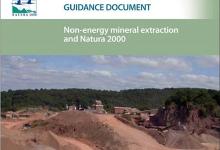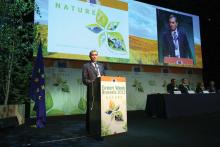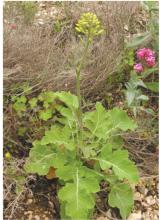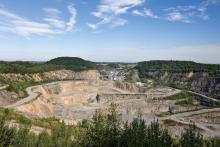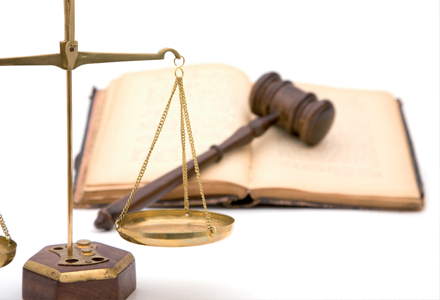
Growth in marine conservation areas across Europe means it is more important than ever that the marine aggregates sector makes its voice heard, according to Robert Camp
Marine conservation is quickly becoming the new battleground when it comes to striking a balance between the environment and the aggregates industry.
To understand what's driving this debate, we have to go back to 1992 when EU governments adopted legislation designed to protect the most seriously threatened habitats and species across Europe. Called the Habitats Directive, it complements the Birds Directive adopted in 1979 and at the heart of both these directives is the creation of Natura 2000 wildlife protection sites.
The Birds Directive requires the establishment of Special Protection Areas (SPAs) for birds. The Habitats Directive similarly requires Special Areas of Conservation (SACs) to be designated for other species, and for habitats. Together, SPAs and SACs make up the Natura 2000 network and all EU Member States contribute and add to it in response to changing circumstances.
The EU sees marine conservation as a developing area and new Natura 2000 marine areas are being identified and designated all the time. Another driver is the EU's pledge, made in 2001, to halt biodiversity loss by 2010. This target is likely to be missed and marine protected areas have been singled out as lagging behind, partly due to a lack of accurate data upon which designations can be based.
For the marine aggregates industry the fear is that the approach being taken to protected sites grossly underestimates the practical realties of delivering a protected designation. The industry, especially in the UK (which provides a fifth of sand and gravel demand in England), argues that the designation process must be evidence-led and underpinned by sound science, and not rushed by what many see as arbitrary deadlines.
The
BMAPA argues that the development of a marine aggregates site requires a consensus-type planning approach that would take, on average, five years. By compressing that process - which is what appears to be happening - participants in the stakeholder-led process could become rapidly disenfranchised and adopt entrenched positions simply for the want of more time to reach agreement.
By its own admission the BMAPA is a single stakeholder interest group talking from its experience in engaging in the SAC (Special Areas of Conservation) process for just a handful of sites. But it also points out that this process represents in microcosm the challenges faced when developing a wider network of designated conservation areas, not just in the UK but across Europe.
British regulatory bodies are now consulting on a raft of new marine sites including six SACs and two SPAs that will contribute to the completion of the Natura 2000 network.
They are formally consulting the industry now (November) before putting the sites forward to the
Also in the UK, work is well underway to create a network of Marine Protected Areas (MPAs) by 2012 as part of the provisions of the Marine and Coastal Access Bill, which is currently making its way through the UK Parliament. This will embrace sites already protected by EU legislation and create new ones called Marine Conservation Zones (MCZs).
Stakeholder groups are to be set up by March 2010 representing different sea users with a view to making recommendations about the location of MCZs in the autumn of 2010. Final recommendations will be made to nature conservation agencies in the summer of 2011.
The marine aggregates sector is not opposed to creating a network of sites of national nature conservation interest in Members States. It is entirely in the industry's interests to have a marine environment that is properly planned, managed, regulated and protected.
The concern is the pace of change, and it is not fair for an industry to be railroaded into accepting new protected areas without those areas being based on sound science and adequate consultation.


